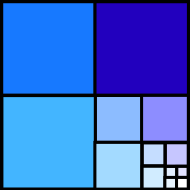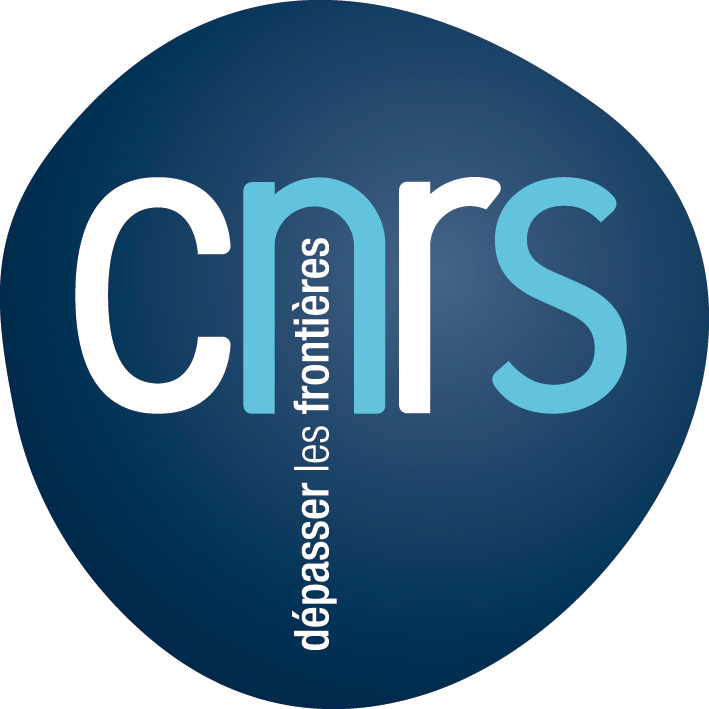
|
Digital expansions, dynamics and tilingsApril 4-11, 2010, Aussois |
 |
|---|

|
Digital expansions, dynamics and tilingsApril 4-11, 2010, Aussois |
 |
|---|
Let t_n = (1 -1 -1 1 -1 1 1 -1 ...) be the Thue-Morse sequence on symbols 1 and -1. We investigate on the asymptotic behaviour of the sums (first studied by Newman) of its first terms t_(p*n) where p is a fixed prime number, which leads to appearance of fractal periodic functions.
Anne Bertrand: Tribonamoins : développements en base négative, répartition modulo un et antifractale de Rauzy
Étant donné un nombre de Pisot de degré d on définit une application du "-beta-shift" dans le tore d-dimensionnel et on montre que l'on obtient une partition de Markov et une fractale genre Rauzy.
Jeong-Yup Lee: Pisot family substitutions and the Meyer sets
We say that a set of algebraic integers T = {t_1, ..., t_r} is a Pisot family if for any 1 ≤ i ≤ r, every Galois conjugate s of t_i with |s| ≥ 1 is contained in T. A Meyer set is defined as a Delone set in R^d for which all the translations of the points in the set form a uniformly discrete set. We consider substitution tilings or point sets with expansive linear map Q. If the set of eigenvalues of Q is a Pisot family, then we call the substitution Pisot family substitution. It turns out that the Pisot family condition on the expansion linear map Q is crucial to get the Meyer property of the substitution point set.
Johannes Morgenbesser: Thue-Morse sequences of squares in compact groups
Let (t_n) = (0110100110010110...) be the Thue-Morse sequence. Then the letters 0 and 1 are equally likely. Interestingly, this property persists for subsequences like linear progressions (t_{an+b}). Recently, Mauduit and Rivat could settle the long standing conjecture (attributed to Gelfond) that (t_p), p prime, and (t_{n^2}) have the same property. In our work, we consider compact group generalizations T(n) of the Thue-Morse sequence and prove that the subsequence T(n^2) is uniformly distributed with respect to a proper measure that is absolutely continuous with respect to the Haar measure. As an application, we prove a result on the frequency of letters of special automatic sequences and some of their subsequences.
Charles-Edouard Pfister: Normal points for the map beta x + alpha mod 1
We prove that any x in the unit interval is normal for the maps beta x + alpha mod 1 for almost all (beta, alpha), beta > 1 and positive alpha < 1. This is a joint work with B. Faller.
Benoît Rittaud: Medietic numeration systems
Let us call medietic numeration system any algorithm which gives a codage of numbers by successive partitions of an initial interval. Such a symbolic perspective provides a synthetic view that allows to study different numeration algorithms in a unified way, like Rosen continued fractions and usual numeration system in integer base. We give a general way to define quality of approximation and, as a corollary, we obtain the general form of the "golden ratio" of any such medietic numeration system. We discuss generalizations to several dimensions.
Nikita Sidorov: The topology of sums in powers of an algebraic number
Let 1 < q < 2 and let Λ(q) denote the set of all finite sums in nonnegative powers of q with coefficients -1,0,1. It is well known that if q is a Pisot number, then Λ(q) is uniformly discrete; on the other hand, if q is transcendental, Λ(q) is known to be dense in R. In this talk we present some recent results on the denseness of Λ(q) when q belongs to certain (rather wide) classes of algebraic numbers.
Thomas Stoll: Stolarsky's conjecture and the sum of digits of polynomial values
Let s_q(n) denote the sum of the digits in the q-ary expansion of an integer n. In 1978, Stolarsky showed that the liminf of the ratio s_2(n^2)/s_2(n) is zero. He conjectured that, as for n^2, this liminf should be 0 for higher powers of n. We prove and generalize this conjecture showing that the result is true for any polynomial of degree ≥ 2 and any base q. We want to give some details of the proof and indicate some surprising corollaries. Some open questions will be posed as well. (Joint work with K.G. Hare and S. Laishram.)
Last modified: May 1, 2010